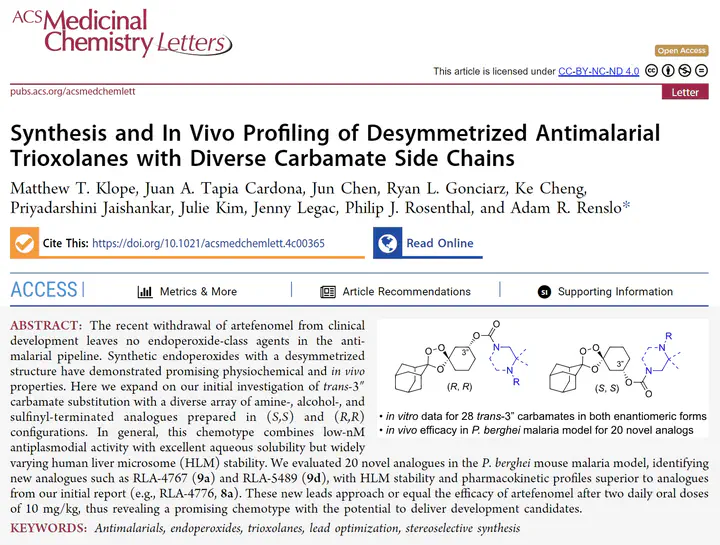Synthesis and In Vivo Profiling of Desymmetrized Antimalarial Trioxolanes with Diverse Carbamate Side Chains
 © 2024 The Authors. Published by American Chemical Society
© 2024 The Authors. Published by American Chemical SocietyAbstract
The recent withdrawal of artefenomel from clinical development leaves no endoperoxide-class agents in the antimalarial pipeline. Synthetic endoperoxides with a desymmetrized structure have demonstrated promising physiochemical and in vivo properties. Here we expand on our initial investigation of trans-3″ carbamate substitution with a diverse array of amine-, alcohol-, and sulfinyl-terminated analogues prepared in (S,S) and (R,R) configurations. In general, this chemotype combines low-nM antiplasmodial activity with excellent aqueous solubility but widely varying human liver microsome (HLM) stability. We evaluated 20 novel analogues in the P. berghei mouse malaria model, identifying new analogues such as RLA-4767 (9a) and RLA-5489 (9d), with HLM stability and pharmacokinetic profiles superior to analogues from our initial report (e.g., RLA-4776, 8a). These new leads approach or equal the efficacy of artefenomel after two daily oral doses of 10 mg/kg, thus revealing a promising chemotype with the potential to deliver development candidates.
Supporting Information:
Supplementary Information can be accessed here.